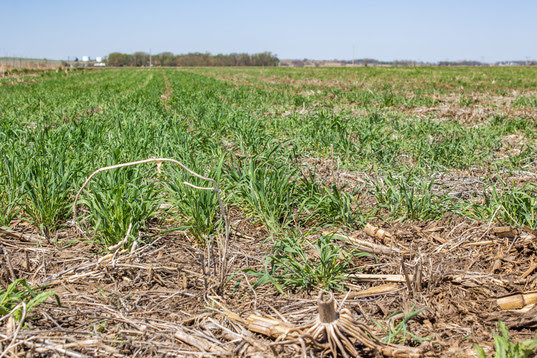With many producers around South Dakota in the process of cutting silage, implementing cover crops is a conservation practice that should be considered. Cover crops serve as a layer of protection between silage harvest and next year’s corn or soybean planting. They improve soil health by reducing erosion risk, increasing water infiltration, and reducing soil compaction. Cover crops can also be used to help suppress weeds and extend the grazing period over winter. While conditions may be dry in parts of the state, cover crops still provide benefit.
As of today, much of South Dakota ranges from abnormally dry to extreme drought according to the National Drought Mitigation Center and the U.S. Drought Monitor. This presents concerns for would-be cover croppers as the lack of moisture could make it difficult for the crop to establish itself. Though there may be challenges, there are ways to address those concerns. Naturally, waiting for a day with a higher chance or precipitation is ideal, but post-harvest seeding via drilling is the best option in cases when there is little moisture on the horizon versus an aerial application. Another important factor is to consider is the cover crop mix. Crop response differs depending on the soil and weather conditions, so it is important to choose a mix that works for your operation and crop rotation. Given that it is September, overwintering cover crop species such as winter wheat, cereal rye, and winter barley or triticale should be the dominant species in those mixes.
The NRCS offers technical and financial aid for producers looking to implement conservation practices such as cover crops on their operations. NRCS technical staff can help create a conservation plan for your operation. Operators set their personal goals, and NRCS staff help create a plan to meet those goals. Find and contact your local USDA Service Center to learn more: http://bit.ly/contactnrcssd.






